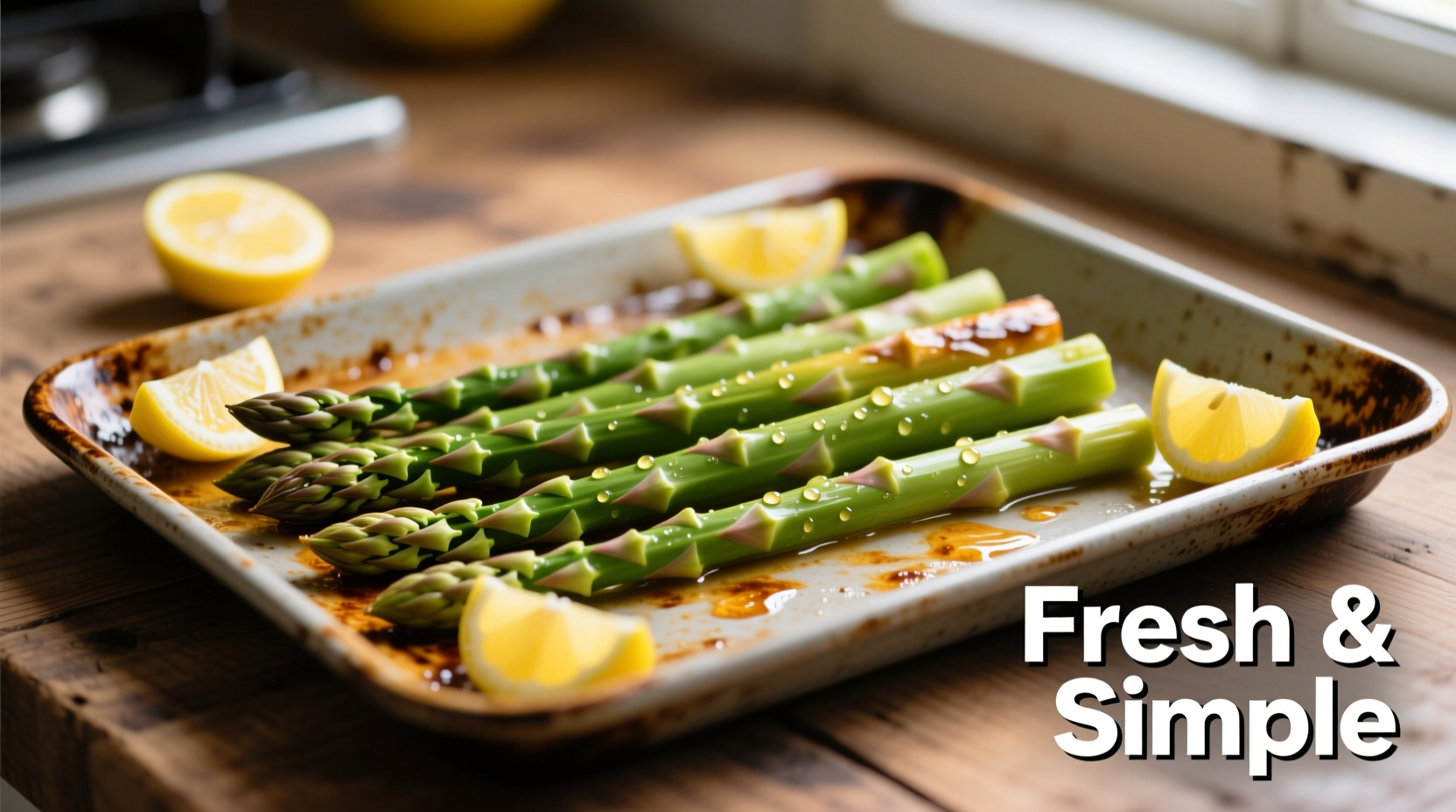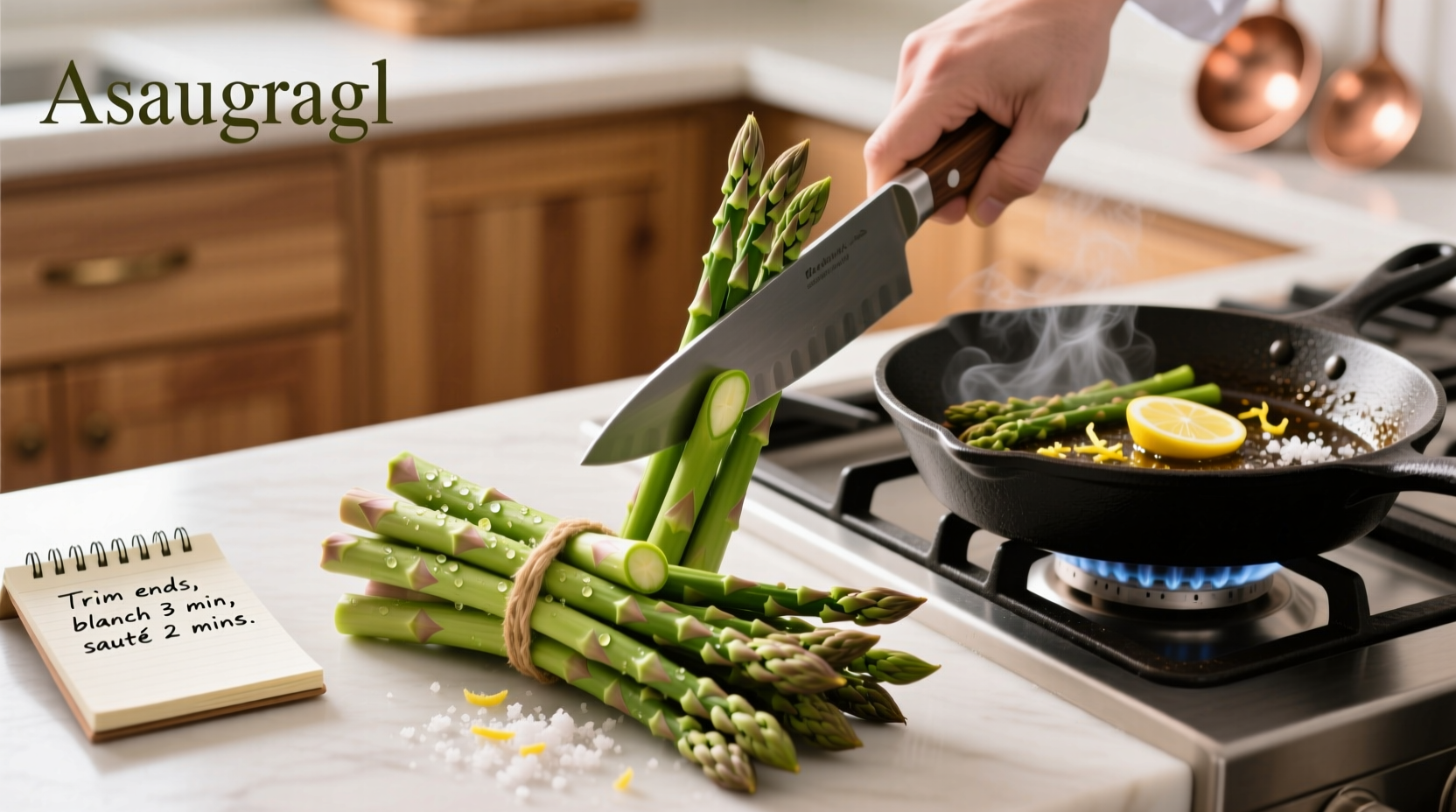Master asparagus cooking with these professional techniques: select firm, bright green stalks; trim woody ends; and cook 2-5 minutes depending on method. Roasting at 400°F (204°C) for 12-15 minutes creates caramelized perfection, while steaming preserves delicate texture. Pair with lemon, garlic, or Parmesan for restaurant-quality results every time.
Asparagus transforms from farm to table through careful preparation and cooking. This nutrient-rich vegetable contains vitamins A, C, E, K, and folate, making it both delicious and nutritious when prepared correctly. Understanding the science behind asparagus cooking ensures you maximize flavor while preserving its valuable nutrients.
Selecting and Preparing Asparagus
Choose asparagus with firm, straight stalks and tightly closed tips. The cut ends should appear moist, not dried out. Thicker spears work best for roasting and grilling, while thinner varieties excel in quick sautés or salads.
Proper preparation prevents waste and ensures even cooking:
- Trimming technique: Hold one spear near the middle and bend until it snaps naturally at the woody point. Use this as a guide for trimming the rest
- Peeling consideration: Peel only thick stalks (over 1/2 inch diameter) from just below the tip downward for improved texture
- Cleaning: Rinse under cool water and dry thoroughly before cooking
| Asparagus Type | Best Cooking Method | Prep Time | Cooking Time |
|---|---|---|---|
| Thin (pencil-size) | Sauté, Blanching | 2 minutes | 2-3 minutes |
| Medium (1/2 inch) | Steaming, Roasting | 3 minutes | 4-6 minutes |
| Thick (over 1/2 inch) | Grilling, Roasting | 4 minutes | 6-8 minutes |
Essential Cooking Methods Compared
Each cooking technique creates distinct flavor profiles and textures. Understanding these differences helps you select the perfect method for your meal.
Roasting for Maximum Flavor
Roasting concentrates asparagus's natural sugars through the Maillard reaction. Toss spears with 1 tablespoon olive oil per pound, season with salt, and spread in a single layer on a baking sheet. Roast at 400°F (204°C) for 12-15 minutes, turning once halfway through.
Pro tip: Add lemon zest during the last 5 minutes of roasting for bright citrus notes without bitterness.
Steaming for Delicate Texture
Steaming preserves asparagus's vibrant green color and crisp-tender texture. Use a vegetable steamer over 1 inch of boiling water. Cook medium spears for 4-6 minutes until fork-tender but still slightly crisp. Immediately plunge into ice water if serving cold to stop cooking.
Grilling for Smoky Complexity
Preheat grill to medium-high (375-400°F). Toss asparagus with oil and seasonings, then place perpendicular to grates. Cook 6-8 minutes, turning occasionally, until tender with attractive grill marks. For thinner spears, use a grill basket to prevent falling through.

Flavor Pairing Science
Asparagus contains glutamic acid, which creates natural umami that pairs beautifully with complementary flavors. Understanding these chemical interactions elevates your dishes:
- Lemon: Citric acid balances asparagus's bitterness while enhancing its natural sweetness
- Garlic: Allicin compounds create complex flavor layers when sautéed before adding asparagus
- Hard cheeses: Parmesan or Pecorino provide salty contrast that highlights asparagus's delicate flavor
- Vinegar-based dressings: Use after cooking to add brightness without cooking off volatile compounds
Avoiding Common Cooking Mistakes
Even experienced cooks make these asparagus preparation errors:
- Overcooking: Results in mushy texture and loss of vibrant color. Asparagus continues cooking after removal from heat
- Improper trimming: Cutting uniform lengths wastes edible portions. Bend method follows natural breaking point
- Crowding the pan: Causes steaming instead of searing. Use adequate surface area for proper caramelization
- Seasoning too early: Salt draws out moisture before cooking, preventing proper browning
Storage and Freshness Timeline
Asparagus freshness degrades rapidly after harvest. Understanding this timeline helps maximize shelf life:
- Day 1: Peak freshness, crisp texture, tightly closed tips
- Day 2-3: Slight softening at cut ends, still excellent for most cooking methods
- Day 4-5: Tips may open slightly, best used in soups or purees
- Day 6+: Significant texture degradation, not recommended for standalone dishes
For extended freshness, store asparagus upright in 1 inch of water (like flowers) in the refrigerator, covered loosely with a plastic bag. Change water daily.
Recipe Inspiration for Every Occasion
Transform your asparagus cooking with these practical applications:
Weeknight Efficiency
Roast asparagus while preparing other components. Toss with 1 teaspoon balsamic vinegar and 1 tablespoon toasted pine nuts immediately after cooking for a 10-minute side dish that feels gourmet.
Dinner Party Elegance
Create asparagus ribbons using a vegetable peeler. Blanch for 30 seconds, then arrange over prosciutto-wrapped scallops with lemon aioli for an impressive appetizer.
Leftover Innovation
Chop cooked asparagus into 1-inch pieces for frittatas, pasta dishes, or grain bowls. The pre-cooked texture integrates perfectly without requiring additional cooking time.
Seasonal Considerations
Asparagus reaches peak quality during its short spring season (April-May in most regions). During peak season, minimal seasoning enhances natural sweetness. Off-season asparagus often benefits from stronger flavor pairings like smoked paprika or anchovy butter to compensate for reduced natural sugars.
According to USDA agricultural data, asparagus contains approximately 20 calories per 100g serving with significant fiber content. Proper cooking preserves up to 90% of its vitamin C when steamed for 4 minutes or less (USDA FoodData Central).











 浙公网安备
33010002000092号
浙公网安备
33010002000092号 浙B2-20120091-4
浙B2-20120091-4